#raspberry pyrausta moth
Explore tagged Tumblr posts
Text
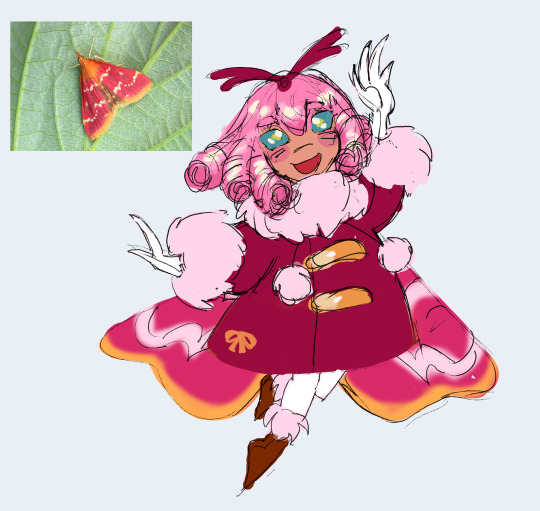
my beautiful daughter who weighs 2 grape exactly(EVERYONE CLAP OR ILL BLOW THIS WHOLE PLACE UP
330 notes
·
View notes
Text





#drawing#digital art#art#oc art#oc#ren#tutelary#tute#moth#butterfly#yea one is corazon inspired#it’s a pink spotted cattleheart#the other is raspberry pyrausta
9 notes
·
View notes
Text
Starting the new year off right (with a new pixel art moth) :]

Pyrausta signatalis - raspberry pyrausta moth
I like crambid moths - they're tiny but very charismatic. This is one of my local species :] How would we feel if I started working on art for this group?
#bugs#art#pixel art#artists on tumblr#insects#tumblr art#pixel graphics#art comms open#bug asks#game dev#moths#lepidoptera#bugblr#bug blog
112 notes
·
View notes
Text
Daily Dose of Lepidoptera
[Day 27]
-Raspberry Pyrausta-
Pyrausta signatalis


-Large Tolype Moth-
Tolype velleda


-Green Owlet Moth-
Leuconycta diphteroides


104 notes
·
View notes
Text
Wild Bergamot/Bee Balm Folklore and Magical Properties
Monarda species, also known as bee balm, Oswego tea, and wild bergamot, is one of my favorite native flowers. The blooms themselves are striking, the leaves are fragrant, they spread very easily, and they thrive where other plants falter. They’re fantastic additions to permaculture guilds, since they’re good at attracting oft-neglected native US pollinators like the raspberry pyrausta moth. It’s…
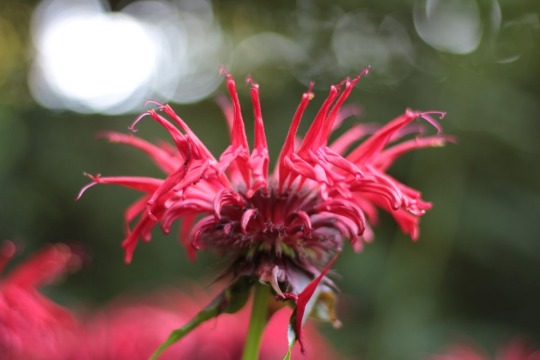
View On WordPress
0 notes
Photo
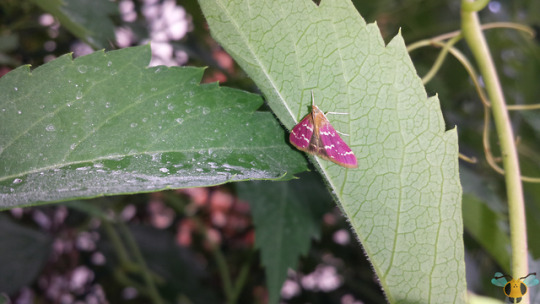
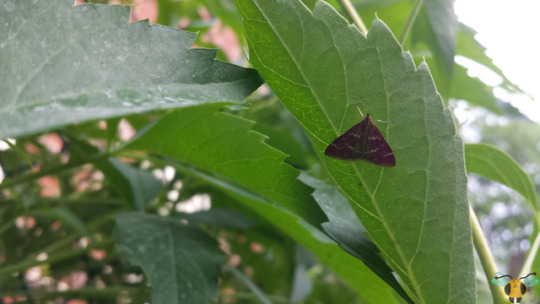
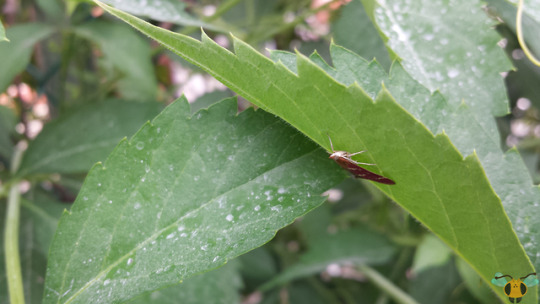
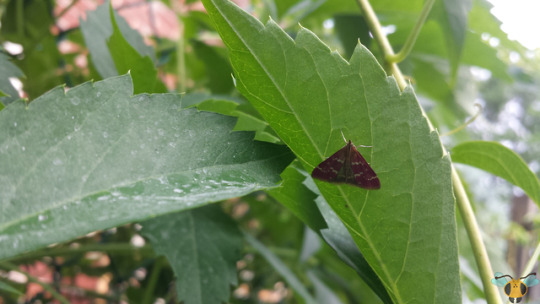
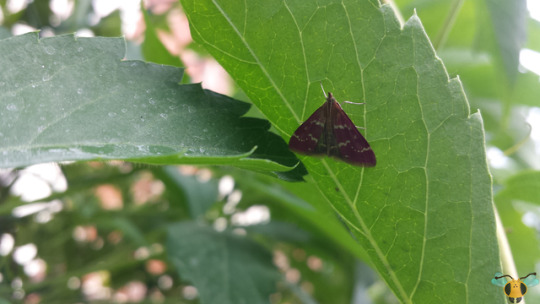
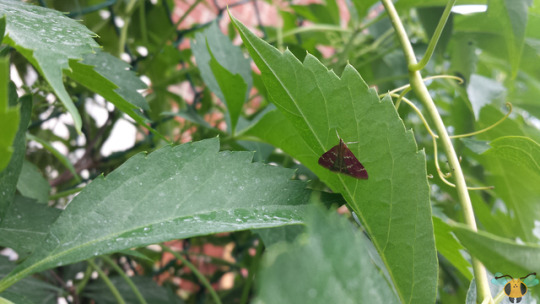
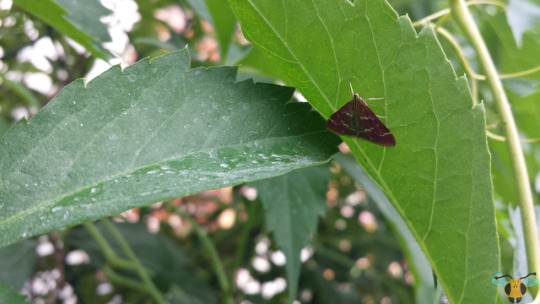
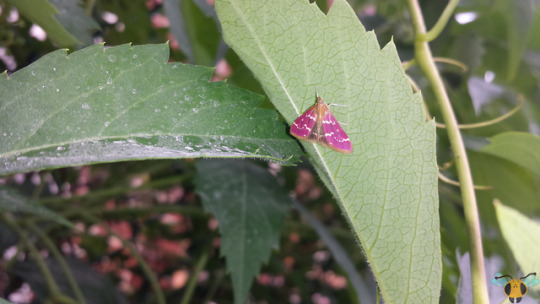
Raspberry Pyrausta Moth - Pyrausta signatalis
What’s this? A Moth flying around in the daylight? Your eyes do not deceive you! If you see a Moth in flight, keep an eye on where it goes because some tend to just disappear at a moments notice. Of course, when they disappear, they aren’t really gone, they’ve probably just picked a hiding place in the undergrowth or under a leaf, like this one did. I suppose darkness provides the best hiding place. This sort of behavior was also seen in the Box-Tree Moth, but with a wider wingspan, it sticks out more, unlike this Moth which is relatively tucked in. Also, different to the Box-Tree Moth, this pink-winged Moth is native to the North Americas and doesn’t seem to be of great concern as far as pest insects go.
This Moth is easily identifiable by its pink colored forewings, adorned with white lines. If you’re looking for this Moth in particular, take extra note on these characteristics as many Moths in the Pyrausta genus exhibit similar (but not exact) colorations and patterning. Some even have brown or yellow wings! While the forewings of this Moth are eye-catching, almost floral, its hindwings are colored brown. Finally, if you zoom in on the Moth’s head, you can see a characteristic snout, liked a pointy nose, which constitute the mouthparts of this insect. While I’m not sure what the adults eat (if they even do eat at all), the larvae prefer eating mint plants - presumably their leaves, but accounts of Pyrausta feeding vary across specie; some preferring the leaves, others boring into the stems and fruits. Don’t let the common name fool you, raspberries are not on the menu.
Pictures were taken on June 24, 2019 with a Samsung Galaxy S4
#jonny’s insect catalogue#insect#moth#raspberry pyrausta moth#lepidoptera#toronto#june2019#2019#ontario insect#entomology#nature#invertebrates#arthropods#photography#animals
1 note
·
View note
Text
What with hosting a Spanish wine tasting party Sunday night, complete with tapas for each of the four wines, and two days of prep on Friday and Saturday, I didn’t quite make July Bloomday on Saturday. But today is the day to remedy that.
Temps were quite normal during the first two July weeks, with highs around 80 and lows in the 50s. This past Thursday and Friday were aberrations, with highs of 72 and 65 degrees F respectively, and Sunday was the hottest day so far this month, 86F. We had some rain on six days (or nights) of the last 15 or so, including heavy rain twice. I haven’t had to water much, except for the new trees, some new annuals, and the veggie garden.
Weather details over, now on to the plants!
*
Annuals: I resist buying them, because they mean money and work every year, but come party time, I felt the need for a few gazanias, alyssums, and some feathery annual grasses to spruce up the joint (i.e., the front entrance).





purple alyssums

feathery annual grass
And I do love zinnia, in particular,





and the cosmos that come back year after year.

I bought six mixed annual bachelor buttons and one is white!

One of the vanilla marigolds is blooming.

Nasturtiums, too.

Soon, there will be yellow and orange calendula flowers.
*
Perennials: Where to begin?
Well, it’s not technically a perennial, more of a bulb situation, but ‘Lucifer’ crocosmia is the best bang for the garden buck I know. The plants are tropical looking, which is exciting when you live above 43N degrees latitude, and the leaves, buds, flowers, and dried seedheads are all attractive. I must have 60 or 80 plants now — and the first ones began blooming today! Last evening, sure enough, there were two hummingbirds (both female, I think) tearing up the place to get near the red flowers. And more of them today.

first blooms!

crocosmia adding colour to the veggie garden

foreground buds


seedheads in Sept. 2016
*
Also blooming for the first time this weekend is the Veronicastrum virginicum ‘Fascination,’ sometimes called Culver’s root. It will put on quite a show in a few weeks, dragging the stems to the lawn in a debauchery of purple and bees, but for now, it’s a modest, elegant display.


*
I guess daylilies (hemerocallis sp.) aren’t strictly perennials, either, growing from rhizomes, but they’re certainly reliable. Before we lived here, someone planted a row of them along the driveway, lined up like unaccountably cheerful prisoners awaiting their cigarettes before being shot at dawn. That’s actually an almost-apt image, as each daylily flower lives for one day, but instead of being shot at dawn, they’re extinguished at dark.
The first one bloomed on 5 July, just one. The next day, three flowers. The next day, eleven. And then they got going, with — from 8 July until yesterday, 16 July — 28, 37, 55, 51, 50, 46, 79, 63, and 65 flowers per day. Yesterday, there were only 17, today 20, but I cut some of the stems on Sunday for the party, diminishing their ranks.

55 lilies on 10 July

50 lilies on 12 July


*
One perennial I thought I would like a lot more than I do is Silene (syn. Lychnis) x haageana ‘Lumina,’ a dark red catchfly flower. Maybe I have it in the wrong place, where it seems too insignificant. I do like the flower, and bud, but I barely notice the three plants in the front border, and it’s crispy and unattractive when it goes by, which is rather quickly. But for a week or two, it’s interesting to see.



*
Speaking of red blooms, the standard red monarda (bee balm) started to flower last week. I think I bought them all — at least 4 masses of them in the front yard and the side yard — at plant sales, but I assume they are Monarda didyma.



I like combining them with the orange daylilies, crocosmia, and purple echinacea for a startlingly colourful bouquet.
Or, if I had more of them, with the ‘Petite Delight’ bee balm, also blooming now (though starting to go by). shown here with ‘Gold Standard’ hosta.

*
Another perennial starting to bloom profusely is filipendula. I love their height (some of them), their fluffy flowers (most of them), their variegated leaves ( a few of them), their colours from white to pink to purple, and their attraction for interesting pollinators, from syrphid flies to little wasps to honeybees and bumblebees, and even for beetles. I bought many at plant sales, without tags as to species, but some I know I have are Filipendula ulmaria ‘Aurea,’ F. rubra ‘Martha Washington’s Plume,’ F. purpurea ‘Nephele,’ and a variegated filipendula.


bumblebee hovering


pink filipendula in bud, 17 July

pink filipendula in bloom and bud, 18 July
*
Astilbe has a somewhat similar flower, though most are not as lush in my view as the filipendula. Again, I have several plants bought with to tags at plant sales (they’re pink! and white!), and a few whose names I know, like Astilbe japonica ‘Peach Blossom’ and A. ‘Bridal Veil.’ They are just getting going now, with more to come the next two weeks; usually they’re all finished by the end of July. These four photos were all taken on 7 July.


flower longhorn beetle (Strangalepta sp.) on astilbe bloom


astilbe buds
And this one taken today, of the same flower stem as in the last photo:

*
While we’re in the shade garden, here are a few others things happening there:

one view of the shade garden

‘Sweet Kate’ Tradescantia x andersoniana (golden spiderwort)


‘Frances Williams’ hosta (I think) flower

‘Blue Cadet’ hosta blooming

Lamium maculatum ‘Beacon Silver” (dead nettle)

Athyrium niponicum ‘Pictum’ (Japanese painted fern) frond

spotted bloom on the new tricyrtis (toadlily) from June plant sale

Inula helenium (Elecampane, sometimes called horseheal) in bud for the first time since I got it from a friend three years ago.

white admiral butterfly way up in the apple tree
*
Here are a few more shots from the front yard.

first ‘Halcyon’ hosta flowers

small purple geranium flower

black and white striped mushroom

pink campanula (gift from friend Nancy)

closer view of pink campanula

veined purple-blue geranium flower

white and chartreuse iris

yet another unknown purple geranium

tulip poplar in bloom (early July)
*
The side yard is where much of the action is this time of year, with blueberries, the vegetable garden, bee balm, crocosmia, elderberry, and lots more.

another shot of the bee balm in the side yard

elderberry shrubs in flower

borage and arugula flowers

blue and pink borage flowers

pink borage, blue sky

purslane thriving in the vegetable garden

‘Sunrise Serenade’ (IpomoeaPurpurea) morning glory in glorious bud

‘Sunrise Serenade’ (IpomoeaPurpurea) morning glory in glorious bloom

‘Anita Kistler’ phlox

The ‘Anita Kistler’ phlox put on a great show in the side yard this year — probably because I didn’t accidentally pull up most of the plants in May and June thinking they were weeds as I often do

‘Anita Kistler’ phlox

‘Ice Ballet’ ascelepias starting to flower

the first milkweed bloom, 7 July

milkweed with yellow and pink flowers

Raspberry moth (Pyrausta signatalis) on milkweed buds

fritillary butterfly on echinacea
Food Crops: So much to show!

In the veggie garden, the peas are finishing up, after seven harvests, the last several of 40 or more pods each.
Aren’t peas amazing, the way they grow these tendrils and wrap around each other and the stakes for support?



The ‘Sun Gold’ tomatoes are starting to yellow up.

I can’t count the arugula and lettuce harvests so far.


The peppers are coming along nicely.

And the cucurbits (squash and cukes) are flowering and growing their vines.


I harvested the first four garlic yesterday; two were a good size, two were smallish, and none had separate cloves, so I’m going to wait a bit to harvest more.

Outside the veggie garden, there are still lots of strawberries

And now a bumper crop of raspberries, despite the grape and Virginia creeper vines intertwined with them.


And despite Japanese beetles mating on their leaves; I think this beetle with the dots on it may be doomed, parasitised by something else.

The peaches are growing, and some are blushing.


I’m using parsley, thyme, oregano, mint, rosemary, and dill from the garden. The fennel (planted in years past) is especially lovely right now.

dill flowers

fennel in fruit guild
*
The yarrow, especially the rugged ‘Summer Pastel’ variety, is all abloom now.

‘Summer Pastels’ yarrow

‘Moonshine’ yarrow
*
The back border, bolstered by the veronicastrum and the miscanthus and panicum grasses, has a summery look to it, I think.

I planted a masterwort there last June and am really enjoying the almost glittery, shimmery flowers. And just today, I found another masterwort plant in the front yard, under the crabapple!

*
We had an early evening visitor to the rock wall recently.

*
And a teensy tiny little lace bug (Tingidae sp.) shown here on the patio table edge after being unceremoniously flicked off my elbow; I thought it was a scab.

*
Aren’t lavender quintessentially summer?

*
Thanks for stopping by! Come back in August, when Joe Pye weed, more asclepias, summersweet, vervain, echinops, more echinacea, buddleia, cucumbers, squash, and others will be on the bloomday menu.
____________________________________________
More GBBD, hosted at May Dreams Gardens:
… danger garden – always fun for me to see interesting spikey things that don’t grow here, and other plants I know only as houseplants
… Late to the Garden Party (south coastal California)
… Lead Up the Garden Path (Devon, UK)
… Commonweeder (western Mass.)
… Dirt Therapy (Vancouver, WA)
July Garden Bloggers’ Bloom Day What with hosting a Spanish wine tasting party Sunday night, complete with tapas for each of the four wines, and two days of prep on Friday and Saturday, I didn't quite make July Bloomday on Saturday.
#Anita Kistler phlox#annuals#arugula#asclepias#astilbe#bee balm#berries#blooms#borage#catchfly#crocosmia#daylilies#filipendula#flowers#Garden Bloggers’ Bloom Day#garlic#gazania#GBBD#geranium#hosta#inula#July#lace bug#lavender#masterwort#milkweed#month of July#morning glory#peaches#peas
0 notes